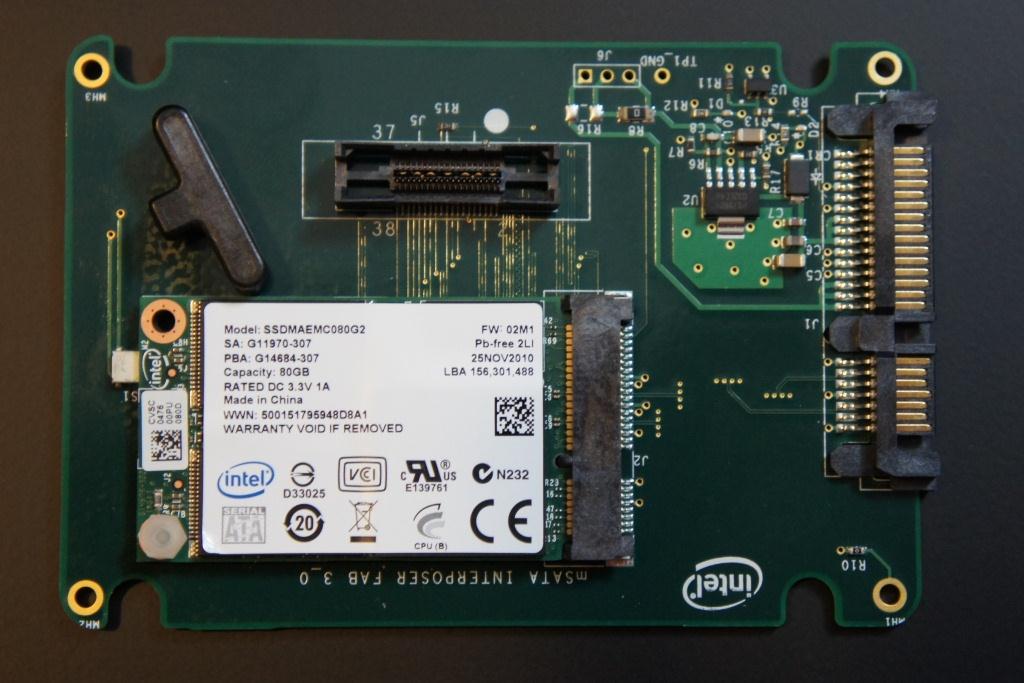Intel, well known for, um, just about everything, has announced their intention to release a unified set of Ultrabook SSD specifications. This comes in the wake of Ultrabook manufacturers releasing their products with SSDs of all shapes and sizes, which has had the side effect of making it difficult for consumers to increase their storage capacity without breaking the bank, if it’s even possible in the first place. If Intel is successful in its efforts, the situation will soon change for the better.
The new specification, known as Next Generation Form Factor or NGFF, should allow the disparate Ultrabook manufacturers to throw their support behind a single SSD physical standard and, in doing so, make the industry (not to mention the market it supports) a better environment overall. Honestly, I can’t imagine how many times an Ultrabook owner has cracked open their case in hopes of an upgrade, only to find that the SSD they want to swap out is in some obscure proprietary format, or worse yet, is soldered onto the motherboard. Can you say stress? I thought you could. Not only can you not increase capacity, you’ve just found out that your new shiny new Ultrabook is more disposable than you could have possibly imagined. The only bright spot is that you probably weren’t going to keep it for more than two years anyway. Even so.
We’ll, with NGFF, it seems we are finally freed from the shackles of all the space saving shortcuts manufacturers employ in their unique notebooks designs. In their place, we finally, have a cohesive, well thought out standard which should put a smile on the face of even the biggest cynics. And why wouldn’t it, after the spec is finalized, there will be one less reason for consumers to avoid Ultrabooks, and that, ladies and gentlemen, is a good thing. Indeed, when it comes to the SSD world, the Ultrabook market has been seen as a savior of sorts, being viewed as the means for SSDs to make their presence known on a much larger scale. Unfortunately, up until now, Ultrabook sales have been relatively dissapointing to say the least. Although the specific reasons for this are unknown, improving the capability of Ultrabooks to be upgraded should go a long way toward silencing the concerns of many would be buyers.
One more thing, not only will NGFF enable consumers to easily increase storage capacity, it will allow them to increase it to unprecedented levels, due to the fact the new form factor includes double sided mounting of flash chips, providing previously unseen storage capacity at this small of a scale. I know the death of the desktop has been predicted for quite a long time now, but for many people, this may actually end up being the final nail in the coffin.
Don’t worry, I’m sure the vast majority of us will have one foot in the grave for some time to come.
 The SSD Review The Worlds Dedicated SSD Education and Review Resource |
The SSD Review The Worlds Dedicated SSD Education and Review Resource | 

Is Intel just creating a standard so that they can have yet another to call their own? What really is the problem with 50mm long drive that can have 256GB of storage and 70mm that can have 512GB?
“NGFF-based SSD have the advantage of allowing NAND chips on both sides of the PCB” [Sarcasm] Wow, I didn’t know that current mSATA drives don’t have chips on both sides of PCB.[/Sarcasm]
And the sizes they want seem so weird: “Currently, there are five lengths being discussed by PC brand vendors
including 20mm, 42mm, 60mm, 80mm and 120mm, with 42mm, 60mm and 80mm
versions expected to have a higher chance of become the final standard.” To me it just feels that they couldn’t fit enough chips and required capacitors that they want on the 20mm and 42mm.
Maybe I am just being cynical.
Intel created the standard to prevent further fragmentation of physical specs. This makes it easier on consumers that want to upgrade. Having flash on both sides of the SSD is a distinct advantage, and one of the main features setting NGFF apart from current formats. Finally, different sizes give Ultrabook manufacturers more options for integration, though it makes sense that the “outliers” probably won’t be as widely adopted.
When it actually happens, I’ll believe it.